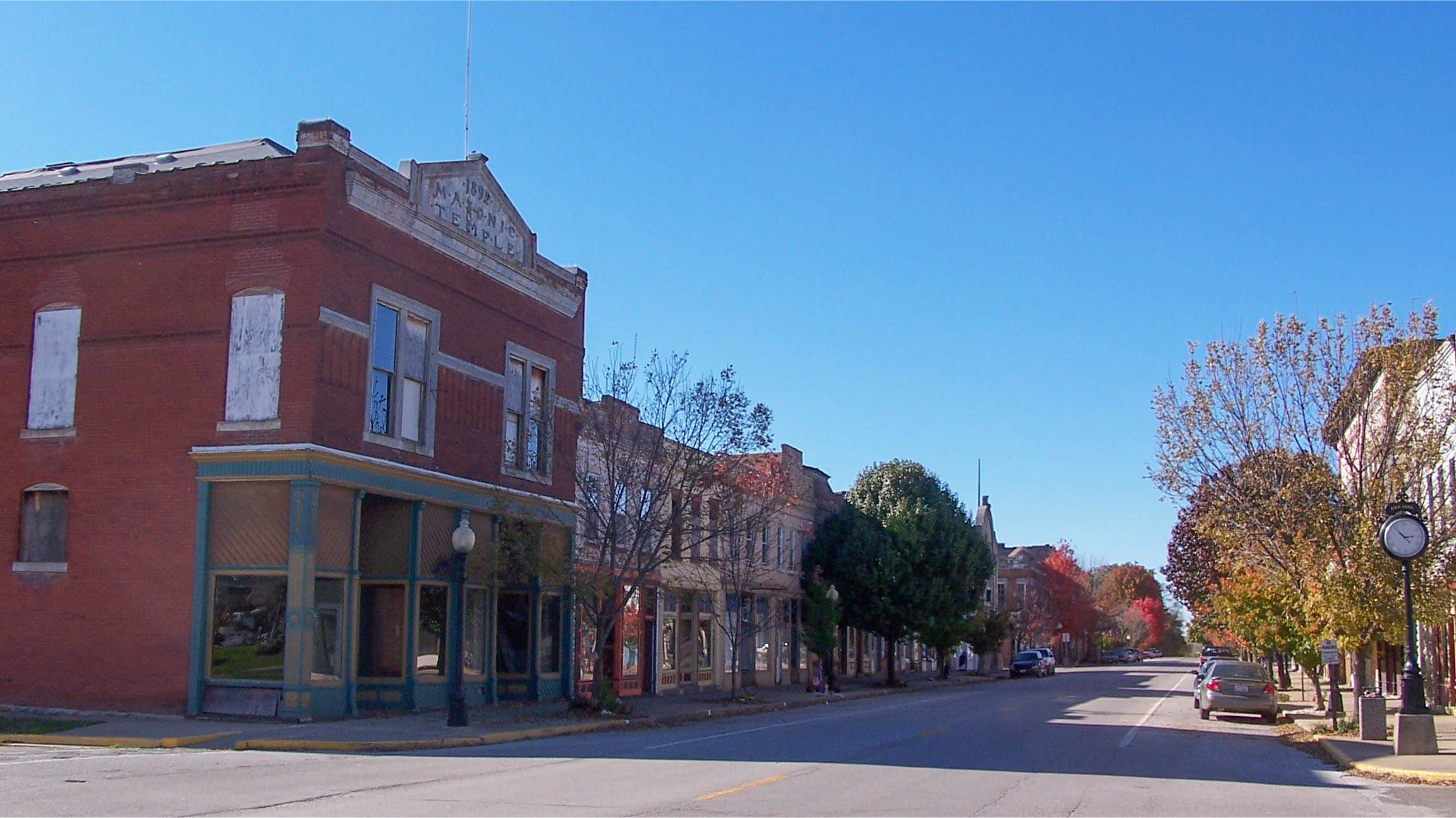Visitors Guide to Hamilton
Hancock County, Illinois
"The best kept secret in the Midwest"
Hamilton is located on the banks of the Mississippi River opposite Keokuk, Iowa with the Great River Road (IL-96) running through the town. Hamilton is the largest community in Hancock County. Hamilton was laid out in 1852 by several men in the area, including Samuel Gordon and Bryant Bartlett. Gordon furnished the 160-acre tract of land purchased by his father in 1833. Bartlett ran a successful ferry between the Keokuk and Hamilton shores until "the great iron bridge" was constructed in 1871. There is an interesting background for the name of the town. Bartlett", 'Rapids City' and 'East Keokuk' were names that were brought up but the Hamilton was chosen because it was the surname of a wealthy resident of nearby Carthage. It was hoped that that the honor might induce him into showing a financial interest in the town.
A boon to the growth of the town came in the early 1870’s when Keokuk-Hamilton Bridge was constructed. This bridge was built at a cost of over $1,000,000 and was constructed entirely of iron, except the road bed, which was of heavy-sawed white-oak lumber. The bridge was a project of the Andrew Carnegie’s Keystone Bridge Company of Pittsburgh. The single deck bridge was built for vehicular, railroad, and wagon traffic. There was a toll house at each end of the bridge which charged 5 ¢ per person or head of livestock up to 25 ¢ for a two-horse vehicle. The bridge was not a financial success due to a financial panic that put the connecting railways into bankruptcy and rival railroads built a bridge across the Mississippi at Burlington and a connecting line down to Keokuk. After the completion of a new bridge in 1985, the Keokuk side of the old bridge was transformed into an Observation Deck which provides panoramic views of the Mississippi River, Lock & Dam #19, and the Hamilton riverfront.
In 1913, construction was completed of Lock and Dam #19. At 4,620 feet it is the biggest dam on the Upper Mississippi. Also completed in 1913 was the Keokuk Power Plant, at the time the largest electricity generating plant in the world. The powerhouse is currently owned by Ameren UE and has a 134 MW capacity. The lock and dam created Lake Cooper, named after Hugh L. Cooper, the designer of the Keokuk Dam. Lake Cooper is the largest pool in the series of dams with 240 miles of shoreline and completely covers the Des Moines Rapids which had been hindering river traffic on the Upper Mississippi since the Pike expedition in 1805. In 1957 a new lock was completed that at 1,200 feet is over 3 times as long as the original. With a 38 foot difference between the normal pool above and below the dam, the lock has the highest "step" in the stairway of the Rock Island District system of locks and dams.
From 1871 to 1900 Hamilton was home to the Riverside Sanitarium which offered its famous "water cure." The Sanitarium, which was located at the corner of Keokuk and Seventh streets, offered its magical water for diseases of all kinds. The mineral water was drawn from an artesian well, and could be taken either internally, or used in the forms of baths and massages. Perhaps Hamilton’s oldest business is Dadant & Sons. Charles Dadant emigrated from France in 1863 wanting to find a place raise grapes and make wine. Dadant found the soil and weather conditions of the Hamilton area unsuitable for the champagne-type grapes he wanted to grow. Dadant had beekeeping experience and he purchased some hives and built a successful business centered on beekeeping. The sprawling park on the north side of Hamilton was used by individuals, church groups and other organizations as far back as the 1880's. The park was a gathering place for barbeques, pageants, and the Hamilton Chautauquas. The name "Wildcat Springs" was born out of a legend that the last wildcat in that area was killed there.











